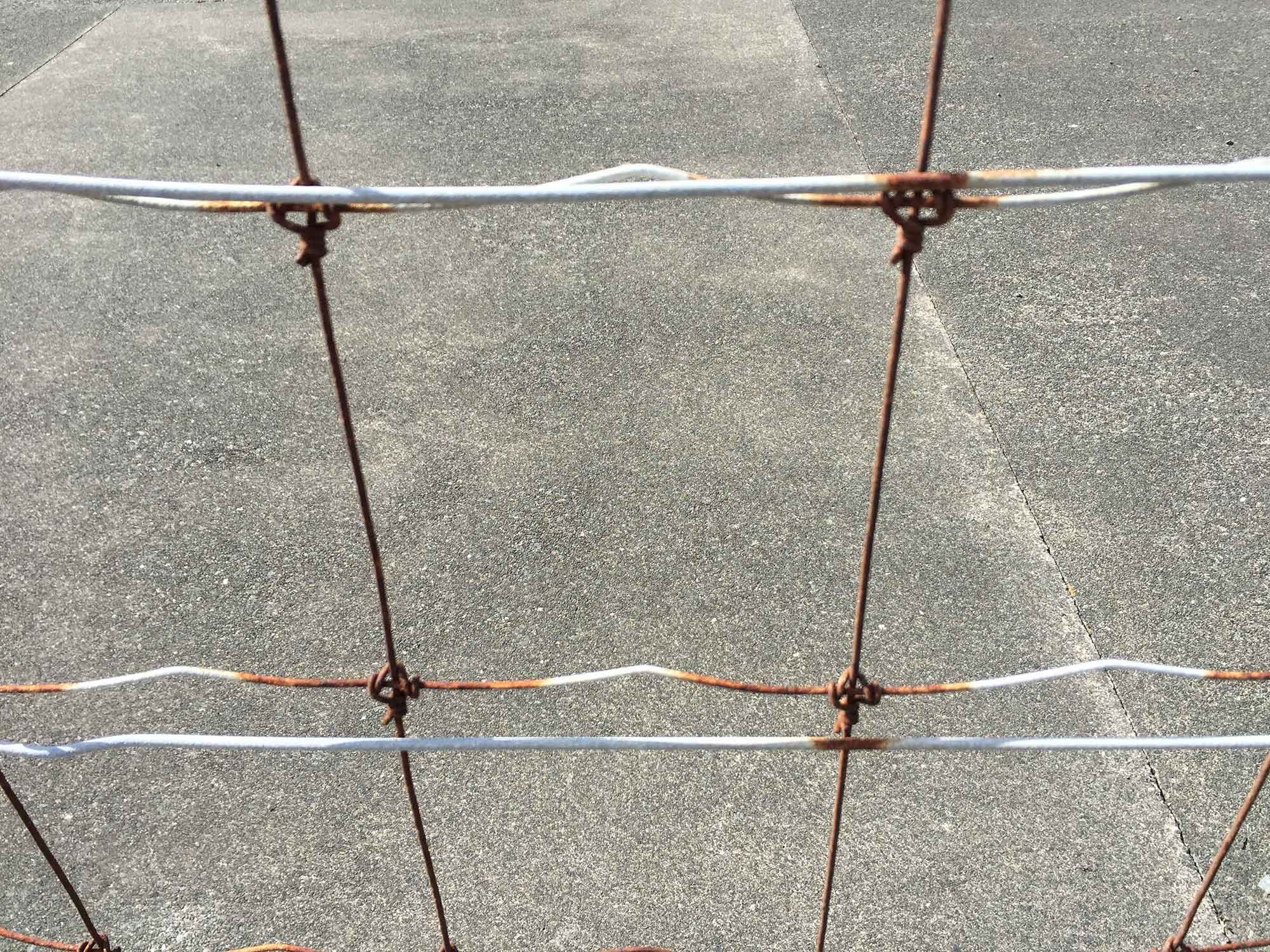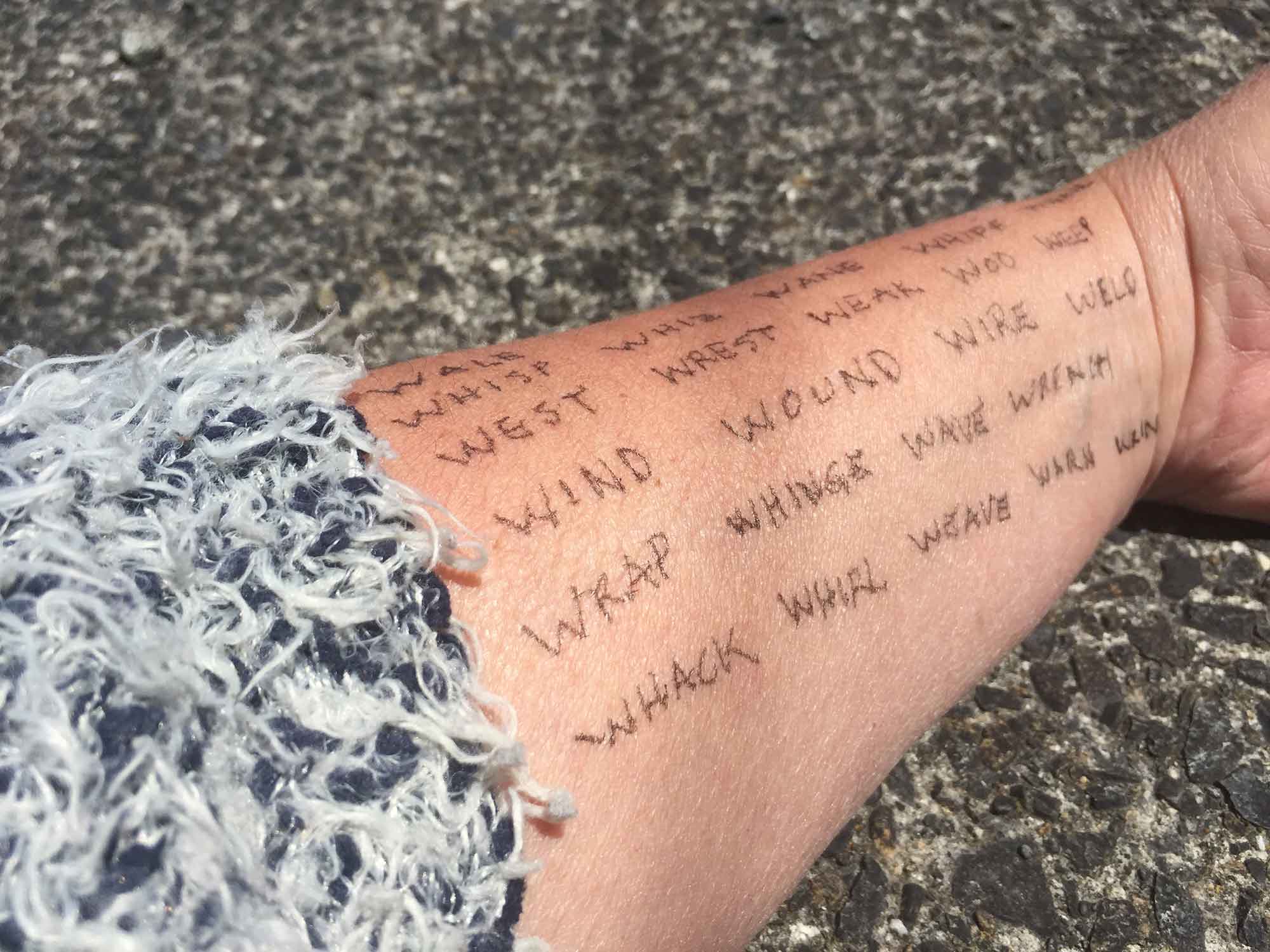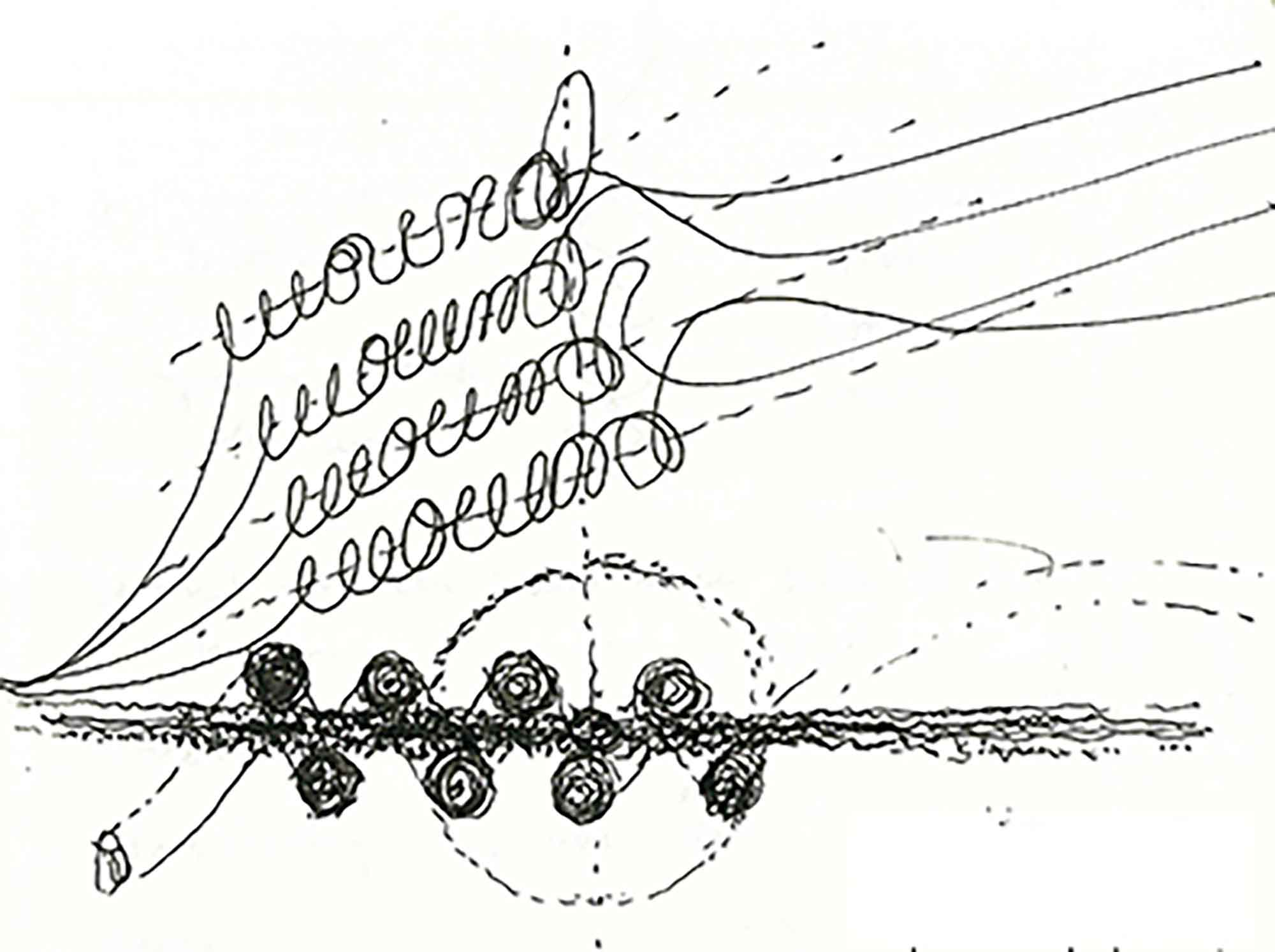- Login
Critical Spatial Practice




In each live art and associated writing piece, I attempted to shed language spoken and written as strictly meaning-making expressive exercises. In each project, voice, sound and noise become the gestures that help me flush out the liveness of things one vibration searching for another, and another, and so on. This effort depends on reclaiming, or better, becoming wildness – unruly, relying less methodically on my habitual cognitive-processes to guide or frame the practice, to embrace the undisciplined, and to some degree, unknowing.
Turn 2: On Site / Performing Writing Symposium, Wellington, NZ and “four castings” [artists pages]. In On Writing & Performance/ Performance Research 23:1, 2018, 21-24.
At Matiu Island, I became an embodied sounding instrument charged by the wind to read the fence continuously as long as it took to circumnavigate the human and animal quarantine facility.
Pitched as an aural weather forecast, the performance’s score was informed by research on the techniques of production and repair of metal fencing as well as climatic data gathered from New Zealand’s Taihoro Nukurangi/ National Institute of Water and Air’s (NIWA) climate archive CliFlo used to measure and describe environmental air movement.
Recalling Ruskin’s Storm-Cloud lectures of 1884, windwoundweatherwovenwirewoman was a vocalisation as foreboding as a storm of environmental or cultural crisis and equally as fertile as a still, warm sticky night. Given the multi-layered and faceted events that structure Matiu Island’s geology, geography, inhabitation, management, protection and development, what is the pitch and tenor of that forecast?
Julieanna Preston is a Professor of Spatial Practice at Toi Rauwharangi/ College of Creative Arts, Massey University, Wellington, Aotearoa/ New Zealand. Spanning across architecture, art and philosophy, her research draws from her background in interior design, building construction, landscape gardening, sound art, material processes, vocal toning and performance writing. Julieanna has delivered live art performances and lectured on her creative and scholarly works in the United States, UK, Sweden, Denmark, Australia, Scotland, Norway, The Netherlands, Canada, Germany and New Zealand. She received a Bachelor of Architecture from Virginia Tech (1983), Master of Architecture from Cranbrook Academy of Art (1990) and a PhD through creative practice from RMIT (2013). Recent works and publications include a sole authored book Performing Matter: interior surface and feminist actions (AADR 2014), Idleness Labouritory: Attuning and Attending (in collaboration with Mick Douglas, Syracuse, NY 2016) and Performing, Writing: A symposium in four turns (Wellington, NZ, 2017). www.julieannapreston.space
In my critical spatial practice, duration, often in long periods, is employed as a transformative factor in establishing relationships with place, weather, and seemingly inanimate materials. My works develop with reference to context and with the aim to amplify the material’s agency amongst an ecology of contingent forces. Subjectivity, emotions and bodily gesture and posture are key markers of a critical consciousness practice. I apply the same principles and values to my writing such that the act of writing and orality of reading are infused with spatial immediacy and often test the conventions of voice, tone, and format of what academic writing has been.
Yve Lomax, Sounding the Event: Escapades in Dialogue and Matters of Art, Nature and Time, 20015, I.B. Tauris.
John Hall, Essays on Performance Writing, Poetics and Poetry, Shearsman Books, 2015.
Laurie Anderson, artist/performer/composer/musician/film director (1947- ).



































































